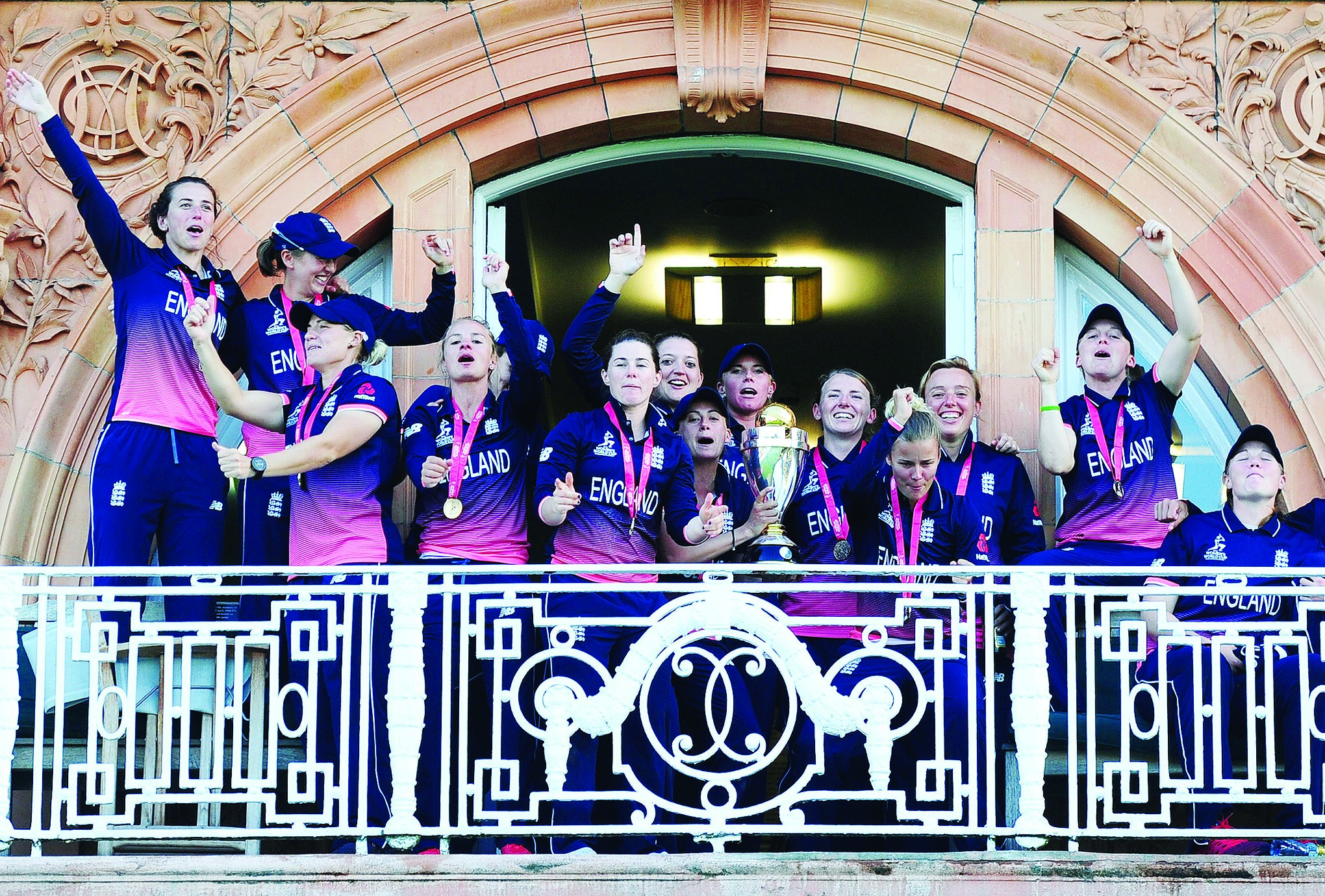Isabelle Westbury: Women’s game is on the charge but there’s still lots more to do

The 2017 World Cup final was seen by many as a turning point for women’s cricket in England. The clamour and calibre that the event attracted was evidence that the women’s game was no longer a burden, piggy-backing on the men’s game. Instead, it was evolving into a commodity in its own right.
In the immediate aftermath of England’s triumph over their unlikely opponents India, however, neutral fans might be forgiven for wiping a tear from their eye as the prospect of a glorious upset was quickly extinguished. Victory boosted the sport in England, but India’s failure to overcome this final hurdle denied them the opportunity to replicate the turning points reached by their men’s side.
No longer the prospect of repeating the feats of the men’s unexpected 1983 World Cup victory, which launched one-day cricket in India, or the success at the inaugural men’s World T20 in 2007, which had administrators hurrying to unveil the IPL.
Yet, as the dust settled on the 2017 final, we were able to reflect that, maybe, in reaching the spotlight and in a game played out to 126 million viewers in India alone, not quite achieving the ultimate goal might ultimately prove more beneficial. Aspiration is a better motivator than complacency.
England, and certainly Australia, are far more advanced in their funding, pathways and domestic infrastructure than other nations. And, for a country like India, whose population of 1.36bn outstrips that of Australia by a factor of 55, the potential, should the BCCI start channelling more of its funds into the women’s game, is huge.
Change is starting: enhanced public profiles, salary increases and a gradual restructuring of the domestic schedule have all occurred over the last two years in India.
An exhibition IPL match even took place last year, though administrators are apprehensive as to the strength in depth of women’s domestic cricket. An incentive, both financially and reputationally, to improve.
Even attitudes towards women in a sporting context are improving. True, in gleefully gloating of their promiscuity and attitudes towards women, Indian cricketers Hardik Pandya and, to an extent KL Rahul, showed they have much to learn.
However, the immediate backlash which ensued across social media throughout India and beyond is proof that many, if not most, now instinctively condemn such views. No doubt Rahul, Pandya, and anyone else naïve to these values, will quickly catch up.
Look beyond the big three of England, India and Australia and other nations might be seeing their own turning points transpire. Following the World T20 late last year, Cricket Ireland announced it would offer professional contracts to women for the first time. The tournament was even more of a revelation for the hosts, the West Indies.
“The way that the West Indies’ crowds have embraced this competition is really important,” observed the cricket journalist Adam Collins, speaking to the BBC during the World T20. “We’ve seen a steady decline in West Indies’ cricket across the board, whether it be on the field, off the field, administratively, commercially – it has been a long road since the mid-Nineties and their dominance in the men’s game.
“But now we’ve seen this latent love for cricket, which is deep within people in this part of the world. I’ve felt it a lot more on this trip than when I did on the Australian men’s tour in 2015. On that trip I was extremely worried about the future of cricket here. But maybe, somehow, through the course of this World Cup, over the last couple of years as well, they have lit a flame underneath their supporter base. And I don’t feel as though supporters here necessarily distinguish between the men and the women in the way that maybe we do in (England and Australia).”
Despite this enthusiasm, there is a danger, of course, that as these nations start to navigate towards a more positive trajectory, the big three are accelerating even further from the pack. The Women’s Big Bash League, the first major domestic women’s tournament to pay its players meaningful sums, is already acknowledged as the foremost league of its kind, broadcast widely and each team tightly linked to their established male counterparts.
This year something remarkable appeared to happen – there was, it seemed, a changing of the guard. Just as cricket fans bemoaned the falling standards that were representative of an apparent quantity-over-quality approach of the BBL’s administrators, they embraced the rising visibility, markedly improved athleticism and excitement that the women’s variant was offering.
The climaxes to this year’s WBBL semi-finals were dramatic. Both coming off the final ball: one involved an extraordinary diving catch in the deep to deny victory for Sydney Thunder; the other featured a remarkably smooth sequence of fielding manoeuvres, executed faultlessly under pressure.
It was the kind of perfect chain reaction only seen in that Honda car advert, of an intricately flawless domino-effect assembly line. It was also a scenario Pakistan’s men tried to replicate two days later in their ODI with South Africa; they couldn’t.
There is much, as always, still to be done. Encouraging progress across the women’s game while ensuring some don’t benefit disproportionately to others is perhaps the biggest challenge.
Pakistan women went unpaid throughout the World T20. The former New Zealand wicketkeeper Peter McGlashan revealed on Twitter that he was paid over six times more to commentate on New Zealand’s domestic women’s T20 final than any female player participating in it. Some problems are not difficult to solve.
ISABELLE WESTBURY | GETTY IMAGES